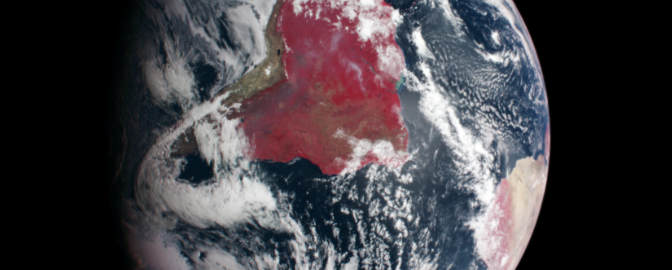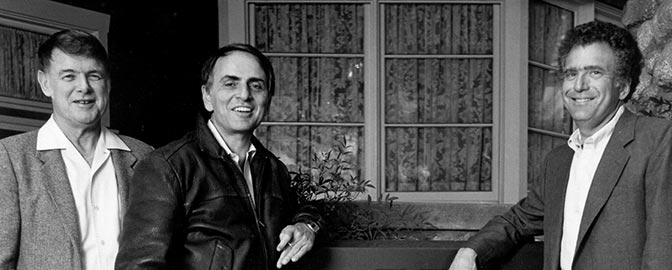Promoted on Sunday, Fired on Monday: Inside a NASA Office’s sudden closure

Written by
Asa Stahl, PhD
Science Editor, The Planetary Society
October 17, 2025
On the morning of March 10, 2025, David Draper sat down to what would be one of his last meetings as NASA’s Deputy Chief Scientist. His team did not know what was coming. But it was the first time they had ever been guarded by plainclothes security at NASA Headquarters in Washington, D.C.
Draper sat opposite the rest of his team. That meant he saw their reactions when they were told that the entire Office of the Chief Scientist was being shut down, and all of their jobs eliminated.
“It was a total gut punch,” Draper said. “I just watched their spirits being crushed right in front of me.”
He did not go quietly.

“What you have here is about 75 years’ combined experience at the top leadership level of this agency,” Draper recalled arguing, “You're telling me you can't find a place for these talented people?”
But the Office of the Chief Scientist (OCS) was only the beginning. In the months to follow, roughly 4,000 employees — over 20% of NASA — would leave the agency. Some went of their own volition. Others were forced out. With the threat of devastating budget cuts still looming over NASA, experts are only now beginning to reckon the impact of this unprecedented brain drain.
OCS offers a way to survey the damage. As one of the first of this year’s dramatic setbacks at NASA, the demise of OCS held the shape of things to come. It foreshadowed threats to slash NASA science, shut down dozens of active space missions, and enact more widespread layoffs and buyouts. It warned of debilitating losses that would strike at the heart of what makes NASA, and the United States as a whole, able to reach for the stars.
NASA’s north star
OCS was originally established in 1982 to be an unbiased adviser to NASA’s leadership, one specifically dedicated to keeping the space program grounded in up-to-date science. NASA often called on OCS for guidance, especially when other experts in the agency couldn’t agree on research priorities.
Take the work of Mamta Patel Nagaraja, who — after years of training astronauts and helping run mission control for the International Space Station — served under Draper as Associate Chief Scientist for Exploration and Applied Research. Nagaraja recalls that when other NASA scientists were at an impasse over which experiments to send up to the space station, they would ask OCS to weigh in.
“You get a neutral perspective, with skilled scientists, to make these tough decisions,” Nagaraja said.

These goals are in line with the administration’s own stated priorities. Just weeks after shuttering OCS, the White House announced an executive order intended to, in its words, restore scientific integrity policies of federally funded research activities. Ironically, most of Draper’s work at OCS was focused on scientific integrity initiatives. Every bit of those efforts has now been canceled, he says.
The Office of the Chief Scientist was hardly an example of bloated bureaucracy, either. According to Draper, its operating costs were around 0.001% of NASA’s budget: a “whopping” $349,000 per year.
“Having no money is what gave us our power,” Draper said, explaining that low, independent funding helped keep OCS unbiased. “We were trying to bring you the best — and that is what has been lost.”
Forced out the door
If OCS’s closure was shortsighted, it wasn’t alone. The larger exodus of NASA employees would turn out to be just as haphazard.
“I'm actually not opposed to reducing workforce if you do it in a thoughtful way,” Nagaraja said, “[But] the number of people that have left the agency — and the number of skills that NASA has lost — is tremendous.”
Roughly half of the workers leaving NASA are senior-level employees, and nearly 1,000 are managers or specialists with decades of experience. This came out of the way that the federal government pushed people out of NASA. Instead of getting fired (as Nagaraja was), most workers left in exchange for accepting a “buyout.” That meant the people most likely to leave were those already nearing retirement or those most confident they could get jobs elsewhere — in other words, the most experienced and highly-valued workers NASA has to offer.
According to Nagaraja, the buyouts were also more coerced than voluntary. She knows colleagues who received multiple suggestions that they leave, and who felt expected to get out.
“Morale at the agency is low. And if there was a layer below low, it’s probably really there,” Nagaraja said. “It is miserable.”
“What could be more dangerous?”
Draper didn’t expect OCS to be shut down. But he put in for early retirement, anyway. Less than a month before his formal last day, OCS was dissolved. Draper was still allowed to retire.
Nagaraja was not so lucky. She had told almost no one, but she would be taking Draper’s place. She was promoted to Deputy Chief Scientist on Sunday, March 9, and was fired the very next day. To Nagaraja, this was just another display of the confused thinking behind the changes at NASA.
“It's going to take a culture change for the scientists at NASA to survive the next four years,” she said.
Whistleblowers and ex-astronauts are raising the alarm that this new, uncertain environment could put NASA missions — and, potentially, human lives — at risk. The space agency has struggled with encouraging its workers to express unpopular opinions before, pointing to such silence as a major cause of the Challenger and Columbia disasters. Now, after such dramatic layoffs, NASA workers may again find it difficult to speak up.
“What could be more dangerous at NASA?” Draper said. “Even if you didn’t cancel any missions, you're going to have a big problem. It's just a matter of time.”
After the dream job
Though Draper has retired from NASA, his career is not yet over. He plans to continue doing work that he considers to be for the greater good, leveraging his expertise to address issues like climate change and wildfires.
“I am not going to give up. I am going to do everything I can to try to pull this beast back from the edge,” he said.
After leaving NASA, Nagaraja became founder and CEO of Vyoma Science & Engineering, a consulting firm. It’s an improvement in some ways, she says — there are plenty of opportunities, and no one is holding her job over her head anymore — but she still describes NASA as her dream job.
“I'd do it all over again,” she said, “even knowing the ending.”
Editor's note: Some facts and figures in this article have been revised for accuracy.
Support our core enterprises
Your gift today will go far to help us close out the year strong and keep up our momentum in 2026.
Donate

 Explore Worlds
Explore Worlds Find Life
Find Life Defend Earth
Defend Earth





